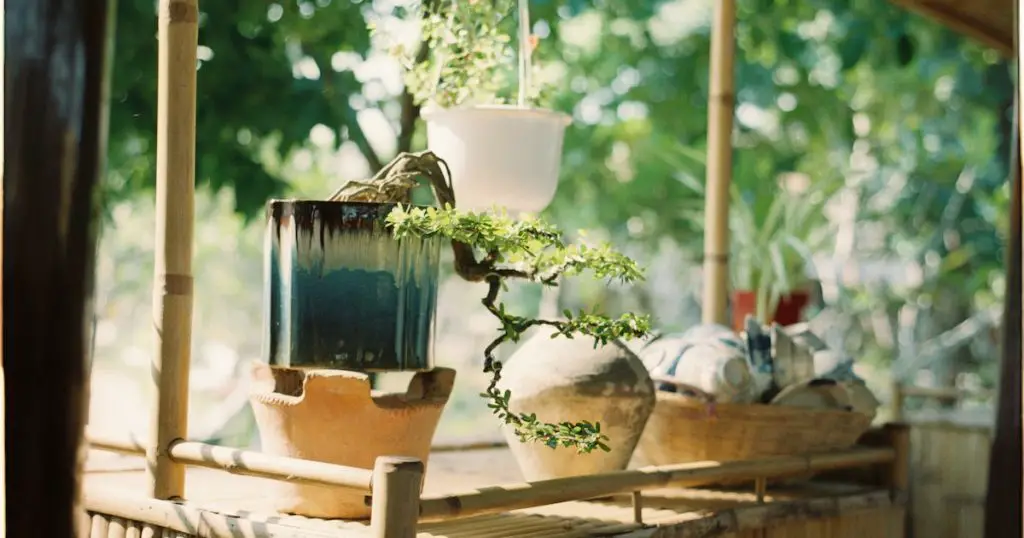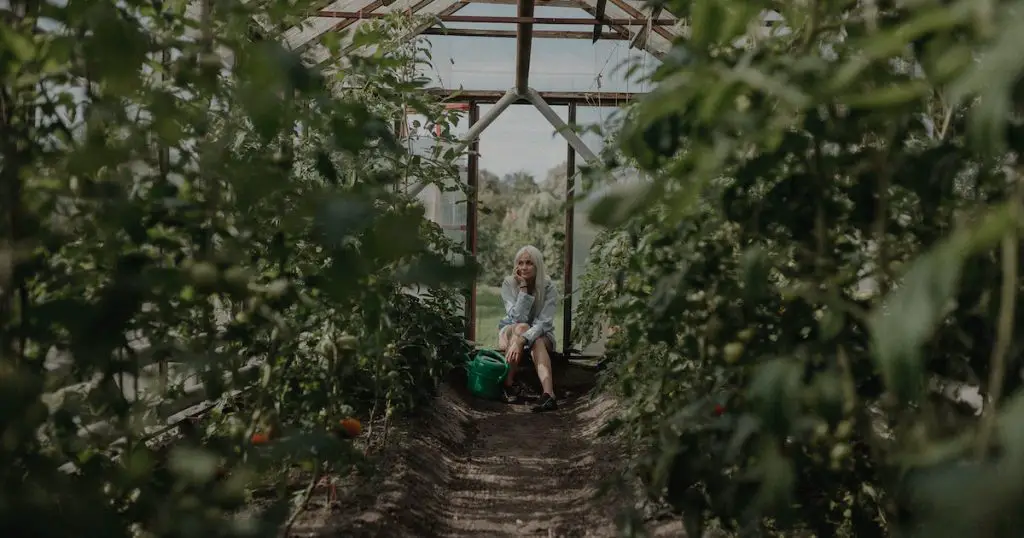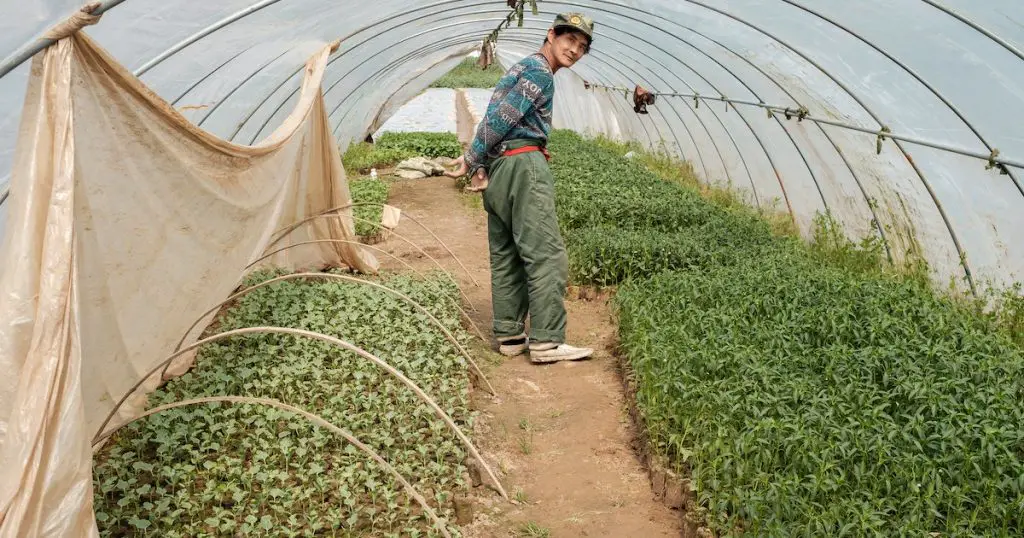Prescott, with its unique natural landmarks, is home to some of the most enigmatic flora in North America. One cannot help but be in awe of the rarest plants found near Prescott’s natural landmarks.

These botanical treasures, often hidden in plain sight, narrate tales of endurance, evolution, and ecological importance.
The Importance of Biodiversity
Prescott’s landscape offers a vibrant tapestry of life that is rich in biodiversity. From its serene lakes to its towering peaks, each landmark has its own ecosystem teeming with life.
Biodiversity is the lifeblood of our planet. It ensures that ecosystems function properly, providing the services that allow us to thrive. For Prescott, it’s not just about the aesthetics but also about maintaining a balanced and thriving ecosystem.
Prescott’s Ecological Significance
Prescott’s geography is unique, offering a confluence of different ecosystems. This results in a myriad of plant species, some of which are found nowhere else in the world. NatureServe has even listed several of Prescott’s sites as biodiversity hotspots, emphasizing their global importance.
Yet, the diverse landscapes of Prescott don’t just make it a haven for plants. They are also vital for various fauna, contributing to an interconnected web of life.
Why Rare Plants Matter
Rare plants are a crucial part of an ecosystem’s fabric. They often play specific roles that other, more common plants can’t fulfill. For example, certain insects might rely solely on one rare plant species for sustenance.
Moreover, according to the Botanical Research Institute of Texas, these unique plants can be indicators of the overall health of an ecosystem. If they thrive, it’s a sign that the ecosystem is balanced. But if they decline, it could signal deeper environmental issues.
Granite Dells: Rocky Wonderland
Granite Dells, with its maze of weathered rock formations, is nothing short of a rocky wonderland in the heart of Prescott. These ancient, rounded granite boulders, sculpted by eons of erosion, present a mesmerizing interplay of light and shadow, evoking awe and wonder in every onlooker.

But beyond their striking appearance, the Dells are a sanctuary for diverse flora and fauna, thriving amidst the crevices and plateaus. As both a geological masterpiece and an ecological haven, Granite Dells stands as a testament to the enduring wonders of nature and the intricate tapestry of life it supports.
Overview and Formation
Formed millions of years ago, the Granite Dells is a series of granite formations eroded into spectacular shapes. National Geographic once featured these formations, highlighting their otherworldly appearance.
Over time, the nooks and crannies of these formations became microhabitats. They provided shelter and nutrients for a variety of plants, including some that are quite rare.
Rare Plants Thriving in Cracks and Crevices
The rugged terrain of the Dells might seem inhospitable, but it’s home to some hardy flora. Plants like the Granite Gilia and the Dells Dudleya have adapted to this challenging environment. Their ability to grow in minimal soil and withstand intense sunlight is nothing short of remarkable.
For those interested in the specifics of these plants, the Arizona Native Plant Society offers in-depth profiles and conservation initiatives.
Recognizing the ecological significance of the Dells, numerous organizations have taken steps to preserve them. Efforts range from habitat restoration projects to educational campaigns aimed at informing the public about these unique plants and their habitats.
Thumb Butte: An Iconic Prescott Landmark
Thumb Butte, rising majestically against the Prescott skyline, stands as an iconic symbol of the region’s rich geological and cultural tapestry. Its distinct silhouette, reminiscent of a thumb pointing skyward, has made it a navigational marker and a subject of many local legends.
Beyond its visual allure, Thumb Butte is a treasure trove of biodiversity, housing a myriad of plant species that paint its slopes in varying hues across seasons. For locals and visitors alike, this landmark is not just a geological wonder but a testament to Prescott’s enduring natural charm and heritage.
Geological and Historical Background
Thumb Butte’s distinct shape is a result of volcanic activity that took place millions of years ago. As the lava solidified, it formed the majestic peak we see today.
The historical significance of Thumb Butte extends beyond geology. Native American tribes revered this place, often using it as a reference point in their travels.
Unusual Flora at Various Altitudes
As one ascends Thumb Butte, the flora changes dramatically. At the base, one might find the Prescott Mariposa Lily, while the peak is home to the rare Thumb Butte Thistle.
Studies from The University of Arizona reveal that altitude and microclimates play a significant role in this diverse plant distribution.
Thumb Butte experiences varying climates, which directly influences its plant life. The moisture-laden winds from the Pacific, coupled with the altitude, create a conducive environment for certain rare species. These microenvironments, or “microclimates,” are integral to the survival of several rare plants.
Watson and Willow Lakes: Aquatic Edens
Nestled within the picturesque landscapes of Prescott, Watson and Willow Lakes emerge as aquatic Edens, enchanting visitors with their shimmering waters and diverse ecosystems. These lakes, each with its unique charm, teem with life, from migratory birds to flourishing aquatic plants.
Serving as a haven for nature enthusiasts and photographers, these aquatic jewels of Prescott offer serene vistas and a glimpse into the delicate balance of nature. Their tranquil waters and surrounding flora create a harmonious setting, making them true paradises for both wildlife and those fortunate enough to witness their beauty.
Lakes’ Formation and Significance
The formation of lakes in the Prescott region is a tale of geological marvels, woven over millennia. Born from a combination of tectonic activities, glacial retreats, and river damming, these serene water bodies have become iconic landmarks.
Beyond their aesthetic appeal, these lakes play a crucial role in the area’s ecology, supporting a myriad of aquatic and terrestrial life. Their significance extends to the human realm too, offering recreational opportunities, supporting local economies, and serving as vital water reservoirs.
In the heart of Prescott’s landscapes, these lakes stand as both symbols of nature’s artistry and pillars of ecological balance.
Aquatic Plants: Floating Jewels of Prescott
The aquatic flora in these lakes is exceptional. From the delicate Water Marigold to the rare Prescott Pondweed, each plant adds to the lakes’ beauty and ecological balance.

For enthusiasts, The Freshwater Trust offers a wealth of information on aquatic plant conservation and their role in freshwater ecosystems.
The banks of Watson and Willow Lakes serve as transition zones. Here, terrestrial plants meet aquatic ones, resulting in an array of flora like the Lakeside Daisy and the aquatic-rooted Prescott Rush.
Lynx Lake: A Lush Forested Gem
Nestled amidst a thick forest, Lynx Lake is a shimmering gem of Prescott. Its surrounding woods are teeming with botanical rarities.
Lynx Lake’s origins trace back to ancient glacial movements. Over time, melting glaciers filled the basin, giving birth to this serene lake. Today, it stands as one of Prescott’s most visited spots, and for a good reason.
Plants Flourishing in Moist Environments
The dense forests around Lynx Lake provide a moist, cool environment. This has led to the growth of plants like the Lynx Woods Orchid and the rare Prescott Fern. These plants have adapted to the forest’s canopy cover, thriving in the diffused sunlight.
Over the years, Lynx Lake has seen an influx of visitors. While tourism boosts the local economy, it poses threats to the rare flora. Organizations like The Nature Conservancy are working diligently to strike a balance, ensuring that Lynx Lake remains a haven for its unique plants.
The Bradshaw Mountains: High Altitude Flora
Rising majestically, the Bradshaw Mountains offer a unique blend of high-altitude flora. Their slopes and valleys hide many botanical secrets.
The Bradshaws’ elevation gradient creates different ecological zones. From the scrubby foothills to alpine meadows, each altitude introduces its own set of flora.
The changing altitude means that a hike through the Bradshaws can feel like traversing several different landscapes. It’s a botanist’s dream, with each step revealing new and sometimes rare plant species.
Alpine Plants: Surviving in Harsh Conditions
The high peaks of the Bradshaws harbor plants that have evolved to withstand the challenges of altitude. These plants, like the Alpine Sunflower and the Bradshaw Mountain Phlox, exhibit unique adaptations such as short growth forms and thick leaves to conserve water.
Research from The Alpine Garden Society elucidates how these plants have evolved over millennia to endure such challenging conditions.
The Bradshaws aren’t just a scenic backdrop for Prescott; they are a vital reservoir of biodiversity. The rare plants that call these mountains home contribute to the region’s ecological balance, ensuring that the mountains remain a verdant paradise.
Spruce Mountain: Green Oasis
Spruce Mountain stands as a beacon of verdant splendor amidst Prescott’s rugged terrains. Its lush green canopy, punctuated by dense pine groves, offers both a visual treat and a cool respite to adventurers and nature lovers.
Renowned for its diverse botanical rarities, this green oasis is more than just a mountain; it’s a testament to nature’s enduring beauty and resilience in the heart of Prescott.
The Diverse Microclimates
Spruce Mountain’s varying topography, from its shaded gullies to sun-kissed peaks, has given rise to multiple microclimates. These microenvironments are pockets of specific climatic conditions that support certain types of flora.
For instance, the shaded north-facing slopes might house ferns and mosses, while the drier, sunlit regions might be home to hardier shrubs.
One of the most enchanting aspects of Spruce Mountain is its dense pine groves. These groves house several rarities, including the Spruce Mountain Pine Orchid and the Prescott Blue Moss. Their presence is a testament to the pristine nature of the mountain’s environment.
Spruce’s Unique Soil Composition and Plant Growth
The soil in Spruce Mountain is a blend of minerals and organic matter, making it fertile ground for plants. It’s this unique soil composition, combined with the mountain’s microclimates, that supports such a diverse range of flora.

Resources from the Soil Science Society of America provide deep insights into the interplay of soil and plant growth.
FAQs: Rarest plants found near Prescott’s natural landmarks
Why are some of these plants considered rare?
Rare plants are often species that have specific habitat requirements or have been affected by human activities, leading to their decreased numbers. In Prescott, many of these plants have evolved to thrive in very specific niches within its diverse landscapes.
Are there guided tours available to see these rare plants?
Yes, several local organizations and tour groups offer guided treks focusing on the botanical wonders of Prescott. It’s always a good idea to check with the Prescott Tourism Office for updated lists of recommended tours.
What are the best times of year to see these plants in full bloom?
Spring and early summer are generally the best times to see a majority of these plants in full bloom. However, some species, especially those in higher altitudes, might bloom later in the summer.
How can individuals contribute to conservation efforts in Prescott?
There are numerous ways! From volunteering with local conservation groups to practicing responsible tourism and even adopting sustainable practices at home, every bit helps. The Prescott Conservation Partnership offers several opportunities for individuals to get involved.
Are there specific regulations when visiting these natural landmarks?
Yes, to preserve the natural beauty and ensure the safety of both visitors and the environment, there are certain guidelines and regulations in place. Before visiting, it’s wise to check the guidelines on the official websites of these landmarks or contact local authorities.
Concluding Thoughts: Protecting Prescott’s Botanical Heritage
Prescott’s rich botanical heritage is a living testament to nature’s wonders. Each rare plant, rooted in history and shaped by the environment, tells a unique story.
As admirers of this beauty, it’s our shared responsibility to ensure that these stories continue for generations to come. Whether it’s through conservation efforts, responsible tourism, or simply spreading awareness, every action counts in preserving these hidden gems.



Leave a Comment
You must be logged in to post a comment.